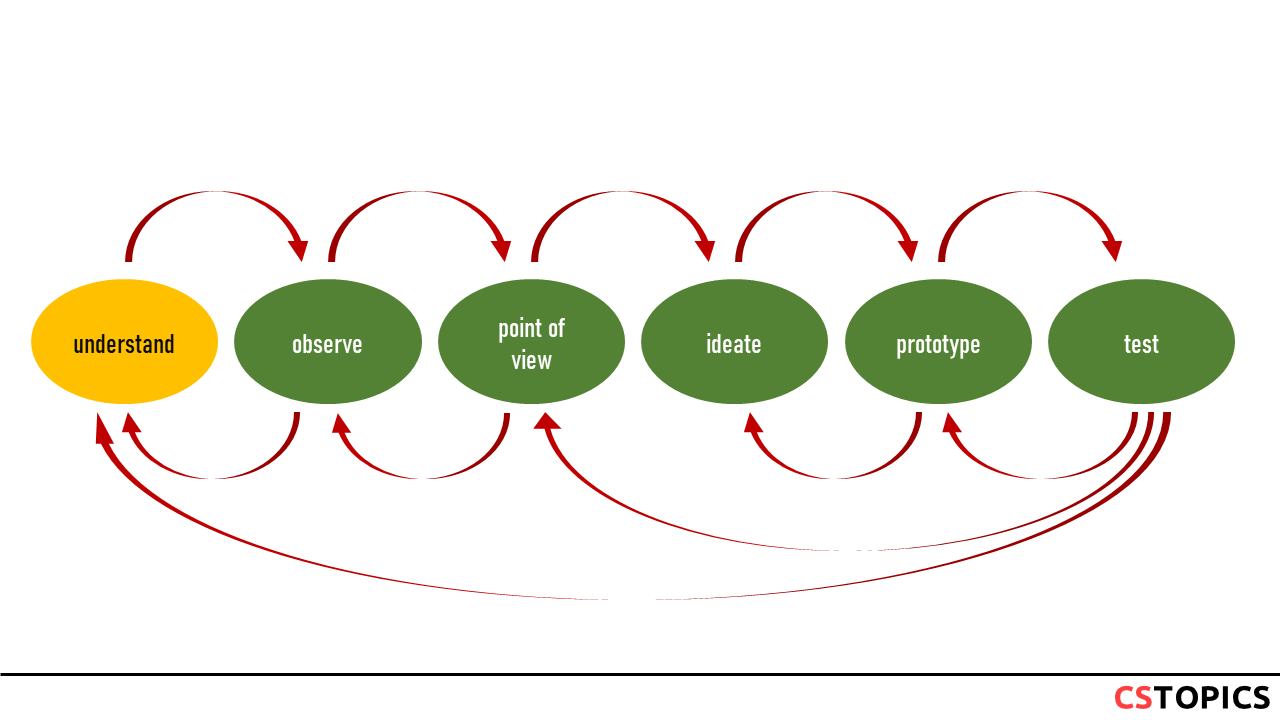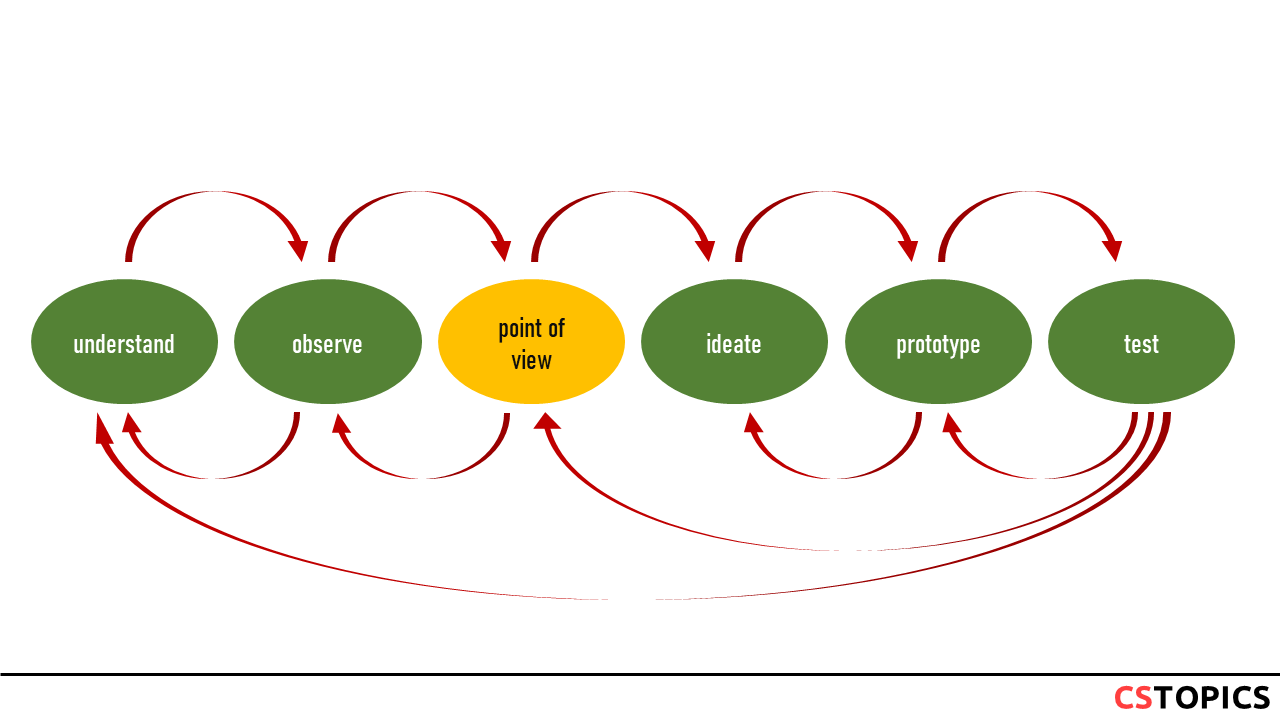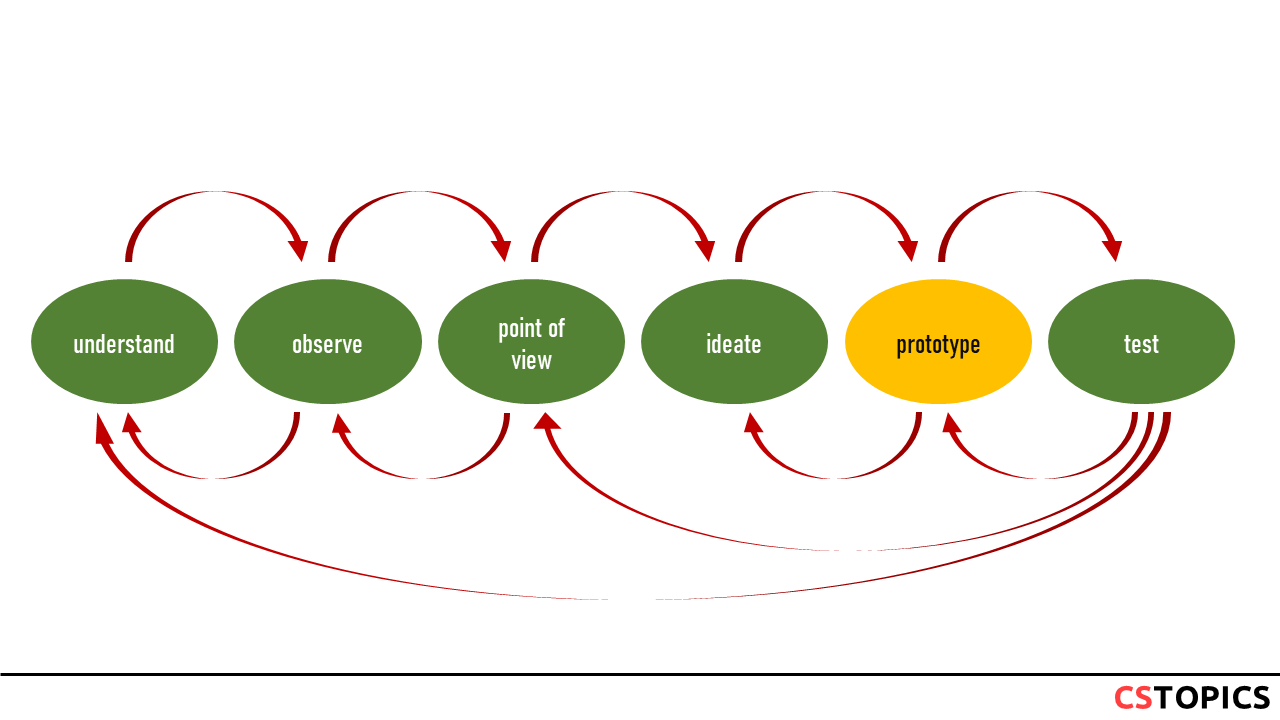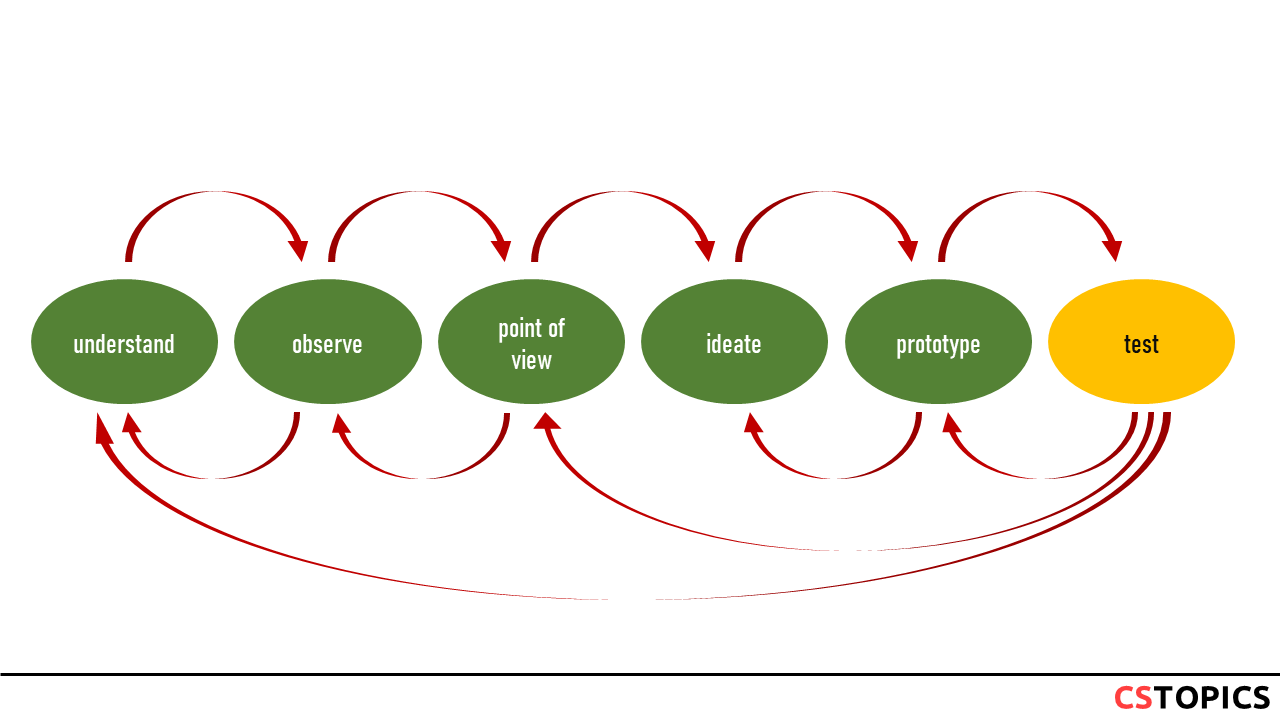Design Thinking
Design Thinking is a customer-centered and iterative method for solving complex problems and developing new ideas. With the Design Thinking method you succeed in developing a solution that is superior from the customer's point of view, weighing up economic efficiency, feasibility and desirability.
In this article we get to know the basics of Design Thinking and the six phases of the Design Thinking method.
Where does design thinking come from?
Design Thinking owes its name to the way designers work. In their work, they follow an intuitive process that is essentially based on observation and a high level of user focus.
Design Thinking was established as a method by Stanford Professor Larry Leifer, the computer scientist Terry Winograd, with whom Google founder Larry Page was in training, and David Kelley, the founder of the design and innovation agency IDEO. The first official conference called Design Thinking Research Symposia took place in 1991. Since 2007, the Hasso Plattner Institute has been promoting the research and implementation of Design Thinking at the School of Design Thinking (d.school).
Areas of application Design Thinking
Design thinking is used in many areas. With its open, creative but at the same time systematic approach, Design Thinking offers a structured procedural model for different questions and problem areas. These range from the question of why patients do not take their medication consistently to the development of new services or even the restructuring of organizations. In the course of digitalization, Design Thinking offers a suitable method for developing digital products, services and business models.
Design thinking process
The design thinking process is the core of the design thinking method. The start and, above all, the end of the design thinking process are characteristic.
- You start with a Beginners Mind and the attitude that you don't know anything.
- You are only finished when an idea has materialized and is actually implemented.
The process in between is an iterative process that focuses on the user and their needs.

Phase 1: Understand - defining the problem
In the first step you define your initial situation and make sure that everyone involved in the process has a common understanding. Your initial situation is characterized by two essential elements:
- There is a problem to be solved from the perspective of the customer and / or your company.
- The general conditions specified by your client or your organization are transparent.
The aim of the first phase is to define the problem but also to define the solution space. In this first phase, make sure not to confuse the interests of your organization and your client with the interests of customers and users. You close this phase with a list of hypotheses about how the problem is from your customers' point of view. A common understanding of the problem is the foundation on which the Design Thinking process thrives in the next stages.

Phase 2: Observe - understand customer needs
In the next phase of the Design Thinking process, you will deal directly with the customer. Your goal is to analyze and understand the needs and priorities of your customers.
In personal conversations with the customer, you can demonstrate how the customer can solve the problem for himself today. You pay particular attention to improvised solutions that customers use to solve their problem.

Watch and listen
You want to help someone? Shut up and listen.
In this phase you are primarily an observer and listener. This means that you try to understand which of your assumptions and thoughts from the first phase are confirmed, but above all which hypotheses cannot be maintained. Since we humans tend to only perceive things that support our point of view, it helps to usher in this second phase with the task of identifying exactly those assumptions that you can delete. These insights will help you define your point of view in the next phase of the design thinking process.
Phase 3: Point of View - what did we learn?

In the third phase of the Design Thinking method, the first two steps are synthesized. Your goal is to develop a conceptual framework based on the collected assumptions and observations that defines the solution space and defines your ideal customer.
While you worked with a very analytical point of view in the first two steps, made many assumptions and gained impressions, in this third phase of the Design Thinking process it is important to "bring the impressions to the point". At this point, you can imagine Design Thinking like a puzzle. From the impressions and parts of the first and second step, you can now formulate a coherent overall picture.
Who is the ideal first customer?
It is particularly important that you develop an idea of the first ideal customer. In other words, the group of users who are particularly affected by the problem and are therefore as open-minded as possible for your solution that is still to be developed. We call the idealized representation of this group of people "Persona", which you describe in as much detail as possible at the end of the third phase. The persona serves as a pole star for the development of your solution in the following steps.
Phase 4: Ideate - outline and prioritize solutions
In the fourth step of the design thinking process, you and your team develop ideas on how you want to solve the problem for the defined target groups and persona. You do this in three steps:
- Collection : First you collect as many ideas as possible. There are no limits to your imagination, every crazy idea has its place. Very important: ideas are not evaluated in this first step.
- Evaluation: When you have collected a sufficient number of ideas, you organize, discuss and prioritize your ideas. The compatibility of profitability, feasibility and desirability has top priority.
- Prioritization: Finally, commit to your idea. Please be critical. Instead of simply "merging" all ideas into one big idea, your most important task is to focus on a few aspects of your solution. It is easier to prototype and test a solution with few aspects than a solution that is too costly.

Copying and remixing is expressly encouraged
In this phase of the design thinking process, stealing is permitted and explicitly desired. That means, don't be afraid to build on the ideas of other team members and develop their ideas further. Above all, look at other industries and problem domains. Thinking outside the box is worthwhile in several ways. On the one hand, you break away from existing patterns and so-called "best practices" in your industry, which usually do not lead to a superior, but only to a "slightly improved" solution. On the other hand, by looking outside the box, you can find out what experience other companies from neighboring industries have with their solutions. With the joint presentation of the first idea to be realized, you can now dive into the next phase of design thinking.
Phase 5: Prototyping - modeling the best ideas
In the fifth step of the Design Thinking method, creativity and manual skills are required above all. Your task is to translate your preferred ideas into a prototype. Up to this point you already have an ideal first customer in mind, have convinced yourself of the customer's problem in direct discussion with the customer and have prioritized ideas on how you can meet his needs. The next step is to model such a solution.

Prototyping mindset and materials
These framework conditions will help you with prototyping:
- Concentrate on prototypes that you can develop in your team
- Prototypes are disposable, do not invest too much time and energy
- A prototype is functional and never finished
There are no limits to the imagination when it comes to the choice of material. From pen and paper, to handicraft materials, sales flyers, press releases, role-playing games or Lego. Or even the use of completely third-party solutions. It is only important that you develop a prototype that gives the customer the chance to put themselves in the shoes of your solution in order to be able to give you feedback. Only real feedback will take you one step further in your search for the best solution.
Phase 6: Test - what does the customer say?

In the final phase of the design thinking process, things get serious. While you have previously dealt with your customer by observing, verbally or intellectually, you now present your prototype to him.
The most important goal in this phase is to get feedback. Not to convince the customer of the brilliance of an idea. Prototypes have the simple task of making abstract concepts tangible. And it's just a prototype, so you can also say: "That wasn't a good idea, get rid of it".
In this phase, you observe closely how the customer interacts with your solution. Questions from the customer are a good indicator that the customer is already "thinking about" your solution and is actively dealing with it. Always try to understand the background of his questions. This gives you valuable insights into points that may have been hidden from you before. Before you present your prototype, however, you should formulate assumptions and expectations under which conditions the prototype can be rated as a success. By the time you've talked to five customers, you will have already received most of the suggestions for improvement and feedback.
Back to go or implement
Testing closes the circle of the Design Thinking method. From here it can go on in any direction. Maybe you have to go back to "Go" again because you only gained important insights in this last phase. Or maybe you are only allowed to vary your prototype in order to receive new feedback. Only when you are confident that your prototype will meet with a sufficiently large number of users do you start implementing your solution.
The solution is then implemented using methods such as Scrum or Lean Startup. Both methods support you in developing a product from your prototype in iterative steps. But the basic attitude of Design Thinking always remains a valuable companion in implementation. Especially when you jump into the implementation of new features before you even understand the problem.
Conclusion
Design thinking is both a method and an attitude. Method, because Design Thinking offers you a process for solving problems with a focus on the customer. The design thinking process also requires a certain attitude, which is essentially characterized by the following features:
- You start with a "Beginner Mind".
- Understand the problem first, then develop solutions.
- The focus is on the customer.
- You are ready to discard unsustainable ideas
- You are only finished when your promising idea has materialized and implemented.
In order to produce compatible results with Design Thinking, the method must find its way into your everyday work. To do this, you need a clean methodological foundation, but above all a lot of practice and practical application. To get started and get to know the method, you can e.g. organize an in-house hackathon or you apply the design thinking process directly in projects.